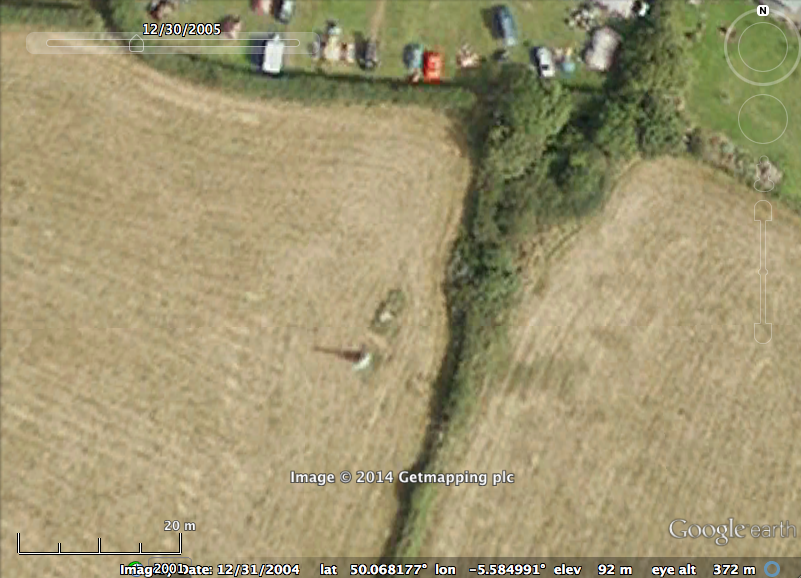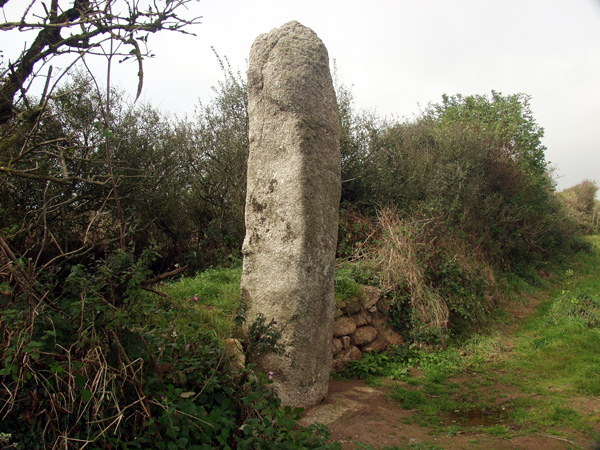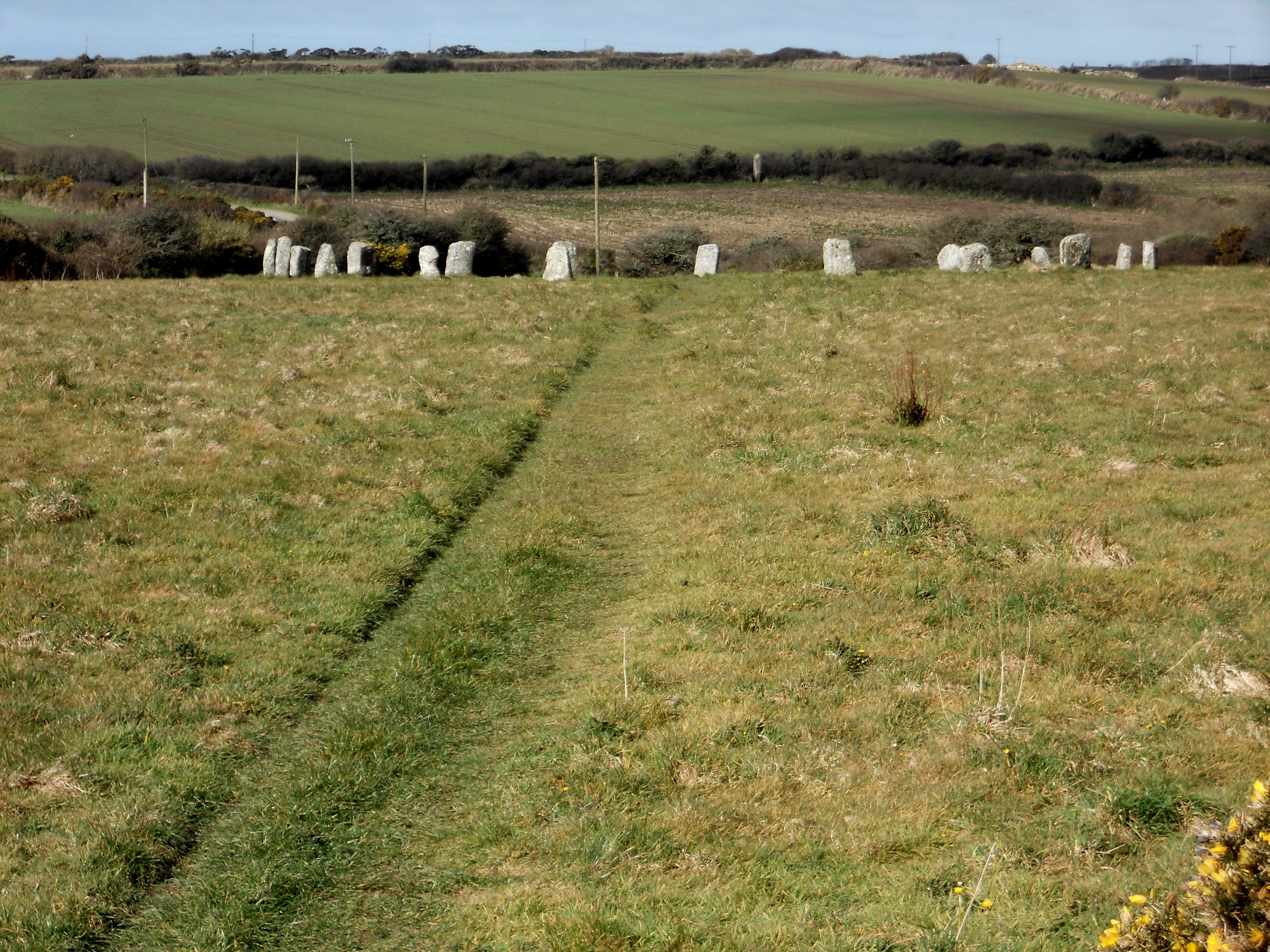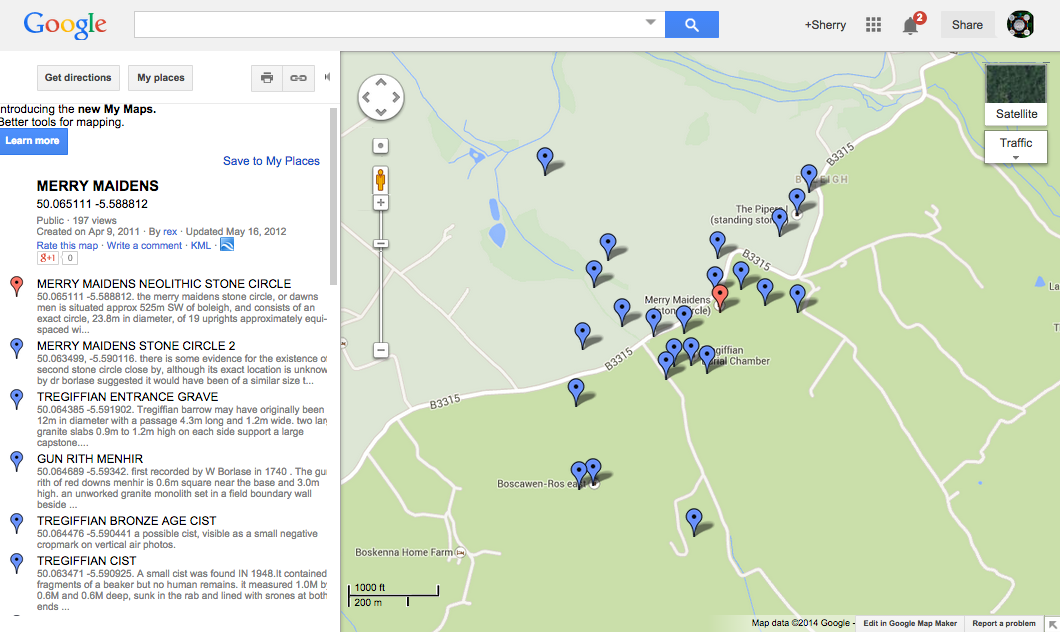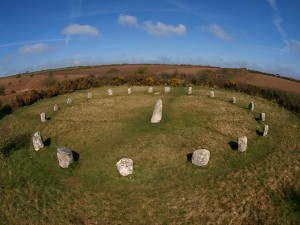[This post is part of a series of posts on archaeoastronomy using open source software]
The Merry Maidens are a late neolithic ring of stones near St.Buryan in Cornwall in the UK, and is Cornwall Archaeological Unit site SW433245. The site consists of a circular ring of 19 upright stones, approximately 24 m in diameter, and is believed to be remarkably intact. The stones are not large, with the largest being approximately 1.4m (just over 4 feet) tall. The site is believed to date from somewhere between 2500BC to 1500BC.
Here is a photo of the site (source www.ancient-wisdom.uk):
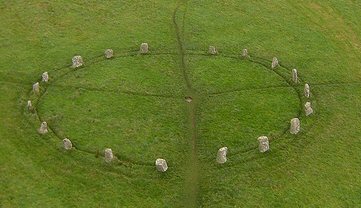
Notice that while the arrangement is quite circular, the stones are not evenly placed about the perimeter. This is one of the best preserved stone circles in the UK, and it is believed the stones as we see them today are in their original placement.
Lots of other pictures and information related to the site can be found at this web page.
Close by the ring lie two partially buried “outlier” stones, as can be seen in the foreground flanking the path in this picture (source www.megalithic.co.uk):

Only one of the outliers (the one sticking up highest from the ground) is usually mentioned in the site description, if indeed the outliers are mentioned at all (which is rare… most people seem to be most fixated on the ring of stones rather than the two partially buried stones nearby). In my analysis that I will describe, I will consider the possibility that these two “outlier” stones may in fact be integral to the function of the site as an observatory.
The surrounding area of the Merry Maidens site is rich in other neolithic sites. To the NE of the Merry Maidens there are two giant standing stones known as The Pipers just within sight of the Merry Maiden circle (they are not quite visible from Merry Maidens standing at ground level). Here is Norman Lockyer’s 1906 description of the visibility of the Pipers:
With regard to the other sight-lines I will begin with that of the Pipers, as it is quite obviously connected with the eastern circle only; the stones, could not have been seen from the other, on account of rising ground. The barrow shown in this direction by Borlase has now entirely disappeared, and the earth has evidently been spread over the surrounding field; its surface is therefore higher than formerly, so that when the opening was made in the wall the top of the nearest piper could not be seen from the centre of the circle; an elevation of about 2 feet from the ground level was necessary.
So, it appears that if you were standing on one of the stones of the Merry Maidens circle (or standing on one of the Pipers), you would have inter-visibility between the stones. Interesting that it apparently didn’t occur to Prof Lockyer to stand on the stones. Here is what the Pipers look like. The Merry Maidens circle is out-of-picture off to the left:
Here is a rough site map showing other stone features in the vicinity (note that the map isn’t to scale, and the relative locations are only approximate):

This is the description of the Merry Maidens site provided by the scientist and astronomer Norman Lockyer in 1906 (caveat: the star rise/set azimuths he gives in that able are nearly all wrong…in Prof Lockyer’s defense, they didn’t have accurate measurements of the Earth’s axial precession and the proper motions of stars back then that change the relative positions of stars in the sky as time goes on).
The furthest piper actually has a very large stone half buried in the dirt close to it. It never seems to be mentioned in descriptions of the site, but can clearly be seen in this photo: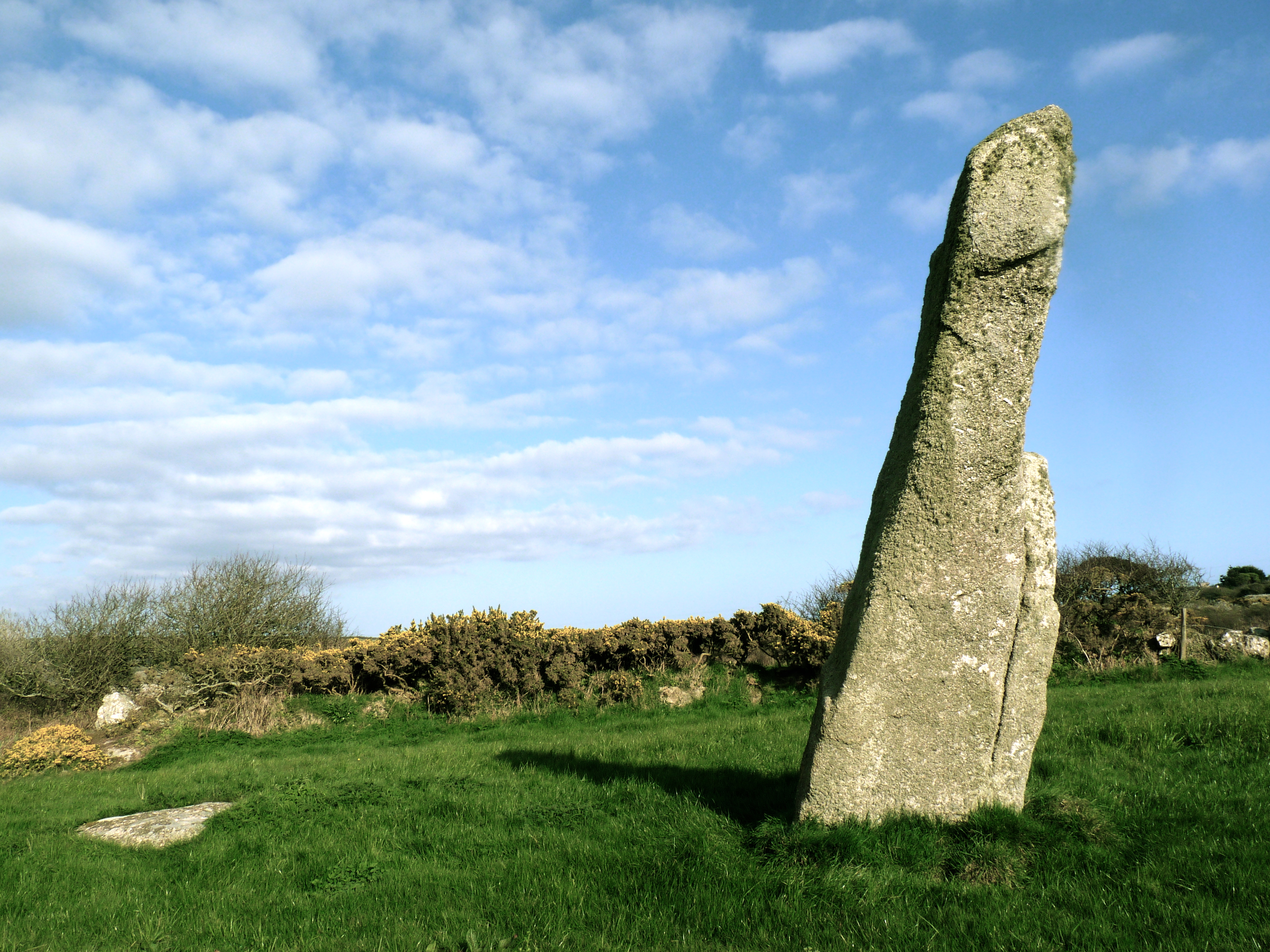
and can also clearly be seen in satellite photos:
To the west of the Merry Maidens circle is another menhir, called Gun Rith. It is a bit difficult to pick out on satellite imagery, because it is nestled in a hedgerow. Its current location is 50.064698N 5.593338W. However, it has fallen over several times in the past, and in recent history was set in concrete by a local farmer. It is unknown if its current location is where it was originally placed (I personally find it somewhat suspicious that it has been set in a hedgerow, conveniently out of the way of the field):
Gun Rith is visible from the Merry Maidens site (that’s it, in the distance, with the path in the foreground pointing almost directly towards it):
About 100m away from the Merry Maidens circle is the Tregiffian burial chamber, which has been half covered by a road (this view is looking down the road away from the Merry Maidens site). The materials uncovered in the chamber have been dated to around 1900 BC. The chamber is marked “A” on the rough site map shown above, and Gun Rith is out-of-picture off to the right, down the hedgerow that runs perpendicular to the road:
A nice description of other features around the Merry Maiden site using Google Maps can be found here. Here is a screenshot:
Another Cornish stone circle: Boscawen-Un
Relatively close by (within a short drive) of the Merry Maidens site to the NW is another well preserved stone circle, Boscawen-Un. Apparently the Merry Maidens and the Pipers are visible from this site when standing at ground level (see also here). Evidence indicates that the central stone was originally placed at the same angle it is at today. Like the Merry Maidens, Boscawen-Un consists of 19 stones in the circle (plus one in the center).
Here is a site map

The stone to the WSW (the one in the foreground in the picture above) is apparently unlike the others, being made of quartz (the rest are granite). In addition, one of the half-buried stones on the NE corner bears an axe petroglyph. The circle probably dates somewhere from 2200 BC to 1830 BC.


